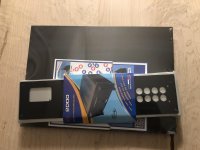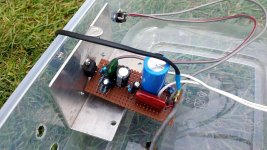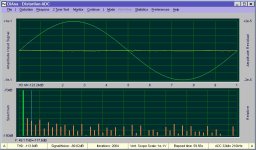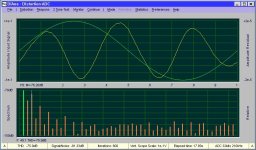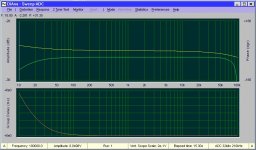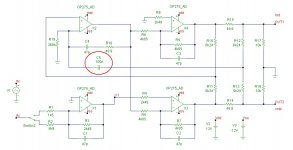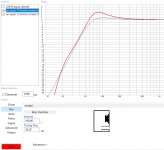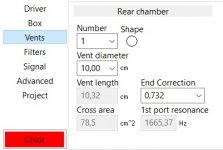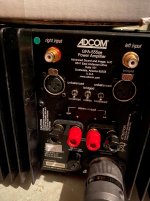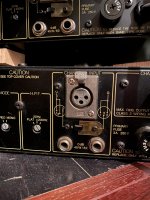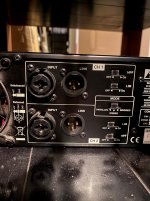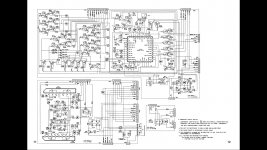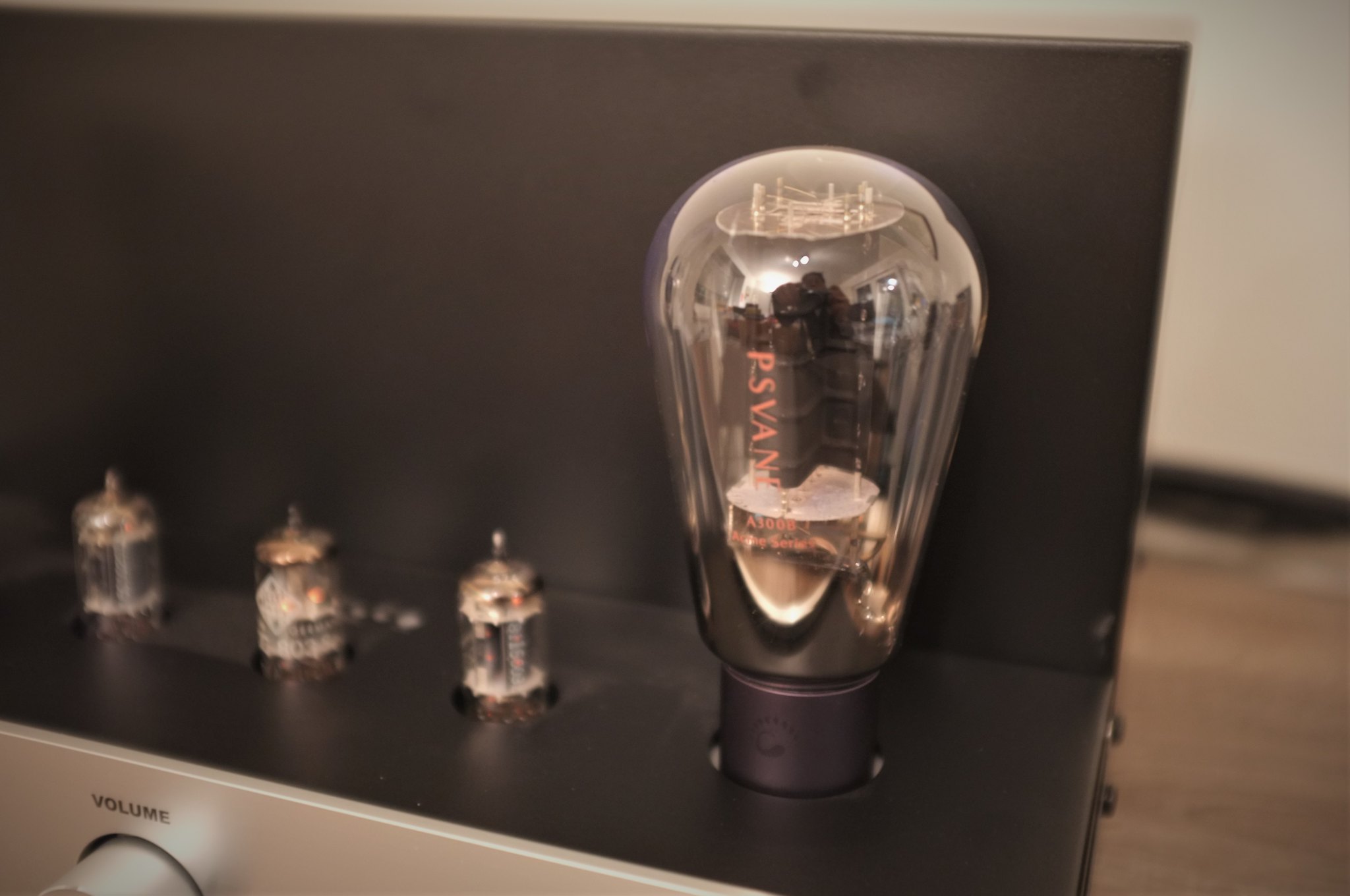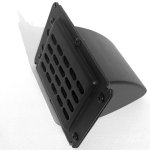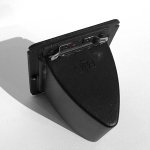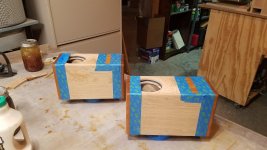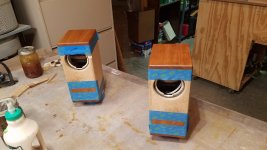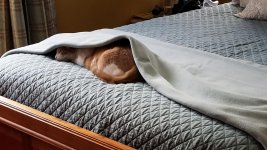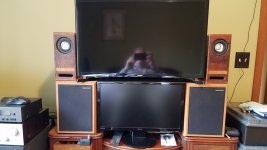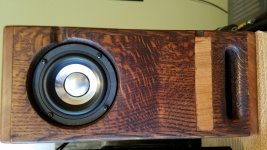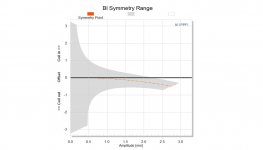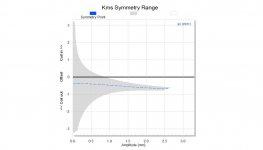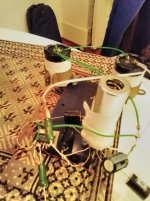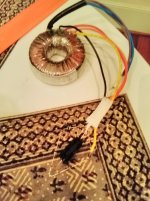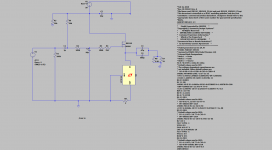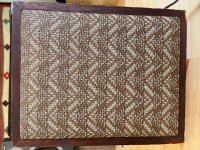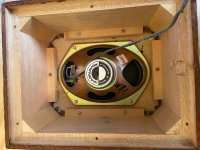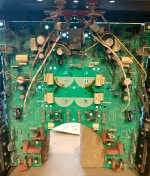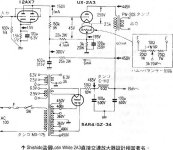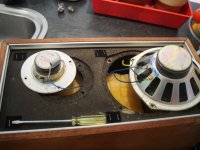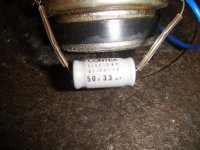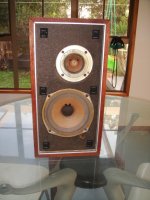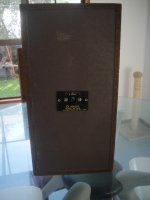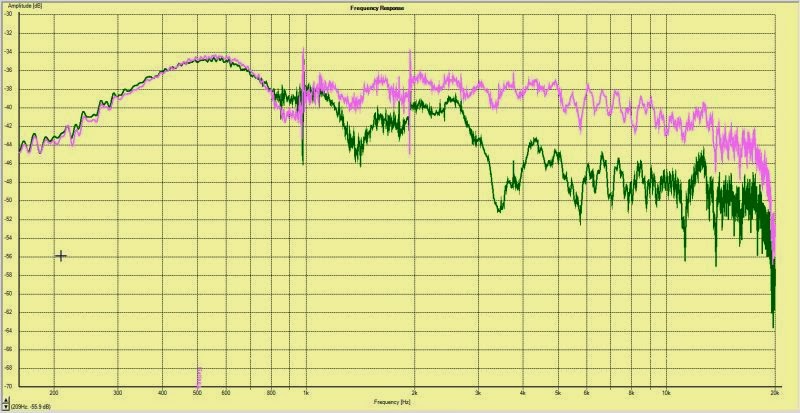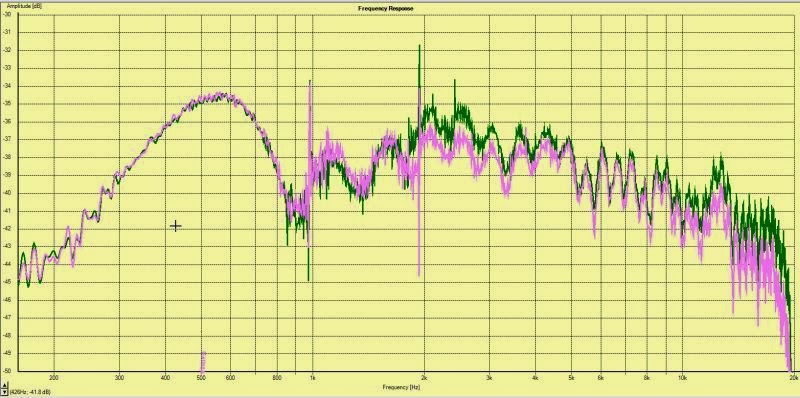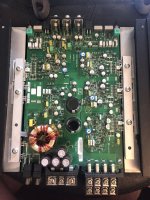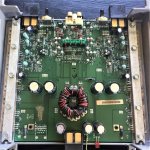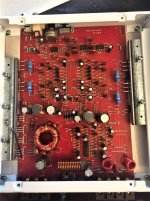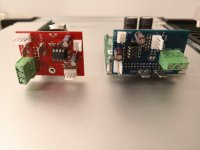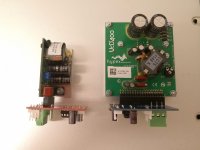Hi all,
I'm an IT guy, 37, my father is the big guru (built couple of tube & solid state amps) but we're not living together and he almost doesn't have any more time to teach me on basics of electronics or hi-fi or whatsoever.
- Ca. 15-20 years ago my first speaker set was 2 fullrange boxes made of MDF, I cut the holes, drivers in, glued together - perfect. Then blown with Prodigy at that time 😀 - well, youth .. you know ..
- Ca. 15-10 years ago my 2nd project: 4 boxes, 2 left, 2 right, all mdf. (3 way, separate boxes for Bass and mid+highs). 2x12" (30cm) bass drivers / side, 4 Ohms each, in series, with front-facing bass reflex holes. Mid+high in a separate box on top of it.
- Passive filter for the 3-way was set-up by myself, based on my father's instructions. He calculated me the 2 basic X-over freqs matching my speakers and I had to solder them together and wound the coils also by myself from his copper wire, using a ferrite core (for the bass coils only).. 3-way classic Butterworth design.
Still using these huge boxes, but the speakers need to be changed. Mids are from Visaton, silk dome ferrofluid tweeters from Audio-Ton ( = almost noname, sound excellent however..) .. bass drivers you can forget .. cheap whatever types..
Now I want to sweep the table and start all-new again with a far better project.
What I have:
- precision soldering iron
😀
- contact to a local company building high-end grade extraordinary speakers, also for hobbyists, partly or fully .. I'd have them build my boxes.
BIZSÓK Loudspeaker Manufactory
- my ultimate-looking wanna-own speaker design
http://www.canhifi.com/Resources/ProductImage/ImageFile/beethoven_concert_grand_1_xtralarge_xtralarge_XtraLarge.jpg
- a 3-way active crossover design I'm going to use from
Linkwitz Lab - Loudspeaker Design, fine tuned to my needs with help of my father..
Where I need advice on:
1. High sensitivity, detailing, fast, audiophile-grade speaker driver recommendation (exact models maybe?) - or at least a good store ! For bass, mids and highs.
2. No big magic pls, I'm rather the realistic type of person, not believing in placing spikes below the 230V/AC splitter
😀
3. Some questions regarding tri-amping with different DIY amps
Target music: sadly I'm almost an all-eater but don't want to have 2 separate systems..
- electronic music (Goldfrapp, Air, Morcheeba, Asteroids Galaxy Tour, Jean Michel Jarre)
- Classics (Karajan Gold collection on LP, mint condition)
- Rebecca Pidgeon, Loreena McKennitt, Dire Straits, Mark Knopfler, Diana Krall CDs, SACDs, LPs and high-res DSDs
- Deep house, techno, electronic music (all lossless)
For topic #1 my imagination so far:
- 8 Ohm total. 2-4 bass drivers, 1 or 2 midrange(s), 1 tweeter
- tweeter would be a ribbon type, I LOVE their sound. DIY amp design would be carefully selected to be able to drive such tweeters with transformers.
- mids: no idea. Something from Visaton, Seas, Fostex, Scan Speak, others.. ?
- bass: no idea. Maybe 8-10" ones ? For more power handling I plan 2 pcs here (at least) - does it make sense to have 4 pcs ? (Does it increase overall sensitivity and detailing capability of the bass section while retaining decent power handling ? I hate slow bass..)
- all 3 ways at around 90+ dB sensitivity, I would like to hear details
- 80% stereo music, 20% home cinema use (2.0 stereo, maybe 2.1 but no sub planned yet)
Topic #3 - tri-amping, DIY amps.
- Does it make sense (or is it a completely wrong idea) of using a mixed setup ? MOSFET amps for bass, tube class AB pushpull for mids (Tung-Sol KT150-s), tube OTL for tweeters ? Considering phase coherence mostly.
- Gains matched, in the amp design and also on the active crossover network (matching the parameters of the driver sections of course)
- Where to put the volume controls ? (Stepped attenuators). The more towards last amp stage or right at the beginning at line level in the preamp ? (Before splitting into 3 ways).
- Passive preamp OK ? (with XLR Input from high-res DAC)
Any advice or useful info warm welcome. Please forgive me for my English and try not to laugh if I seem to dream big with so few knowledge about electronics.
🙂 It's always that I dream and my father helps me to put things ready onto the table.
😉 I'll need him for this project too but without your valuable help it would still remain just a simple oldschool design without any traces of quality. I really strive for quality here (combined with decent power), at least as far as a hobbyist I can go..
Many-many thanks !!
